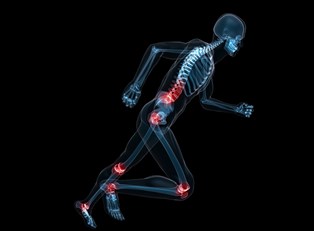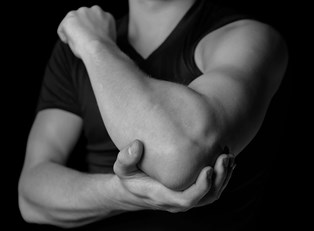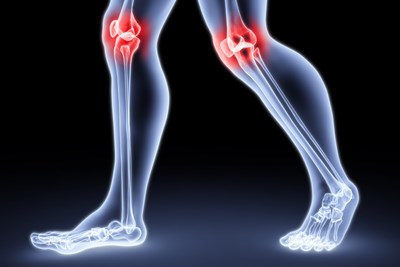The area in between where two bones meet is a joint, such as knuckles, elbows and knees. The duty of joints in the body is to allow movement of the two bones, for example, walking or eating.
There are several parts to a joint. The cartilage and the bursas act as cushions and the synovial membrane lubricate the joint. There are also tendons and ligaments that aid in movement.
When any of these areas become tender, swollen, injured, and/or arthritic, this is called join pain. This pain, discomfort, or stiffness can occur even if the body is sedentary, like sitting or lying down and can be strong enough to cause immobility. Sometimes join pain is caused from disease or a degenerative disorder or ailment. Join pain caused from injury, such as sprains and strains, and disease, like cancer or rheumatoid arthritis may last a few hours or it could become chronic, lasting over three months. There are various symptoms and causes of join pain which should be diagnosed by a doctor as soon as possible to minimize the pain and the possibility of further injury.
Join pain symptoms are basically broken down into three groups: common, serious, and life-threatening. Some common joint pain symptoms can include stiffness and swelling. These two symptoms go hand-in-hand as the inflammation of the affected joints will cause them to become stiff. The inflammation can also cause the joints to become deformed, especially in the fingers and toes. In addition, the severity of the pain, stiffness, and swelling could cause loss of movement and usage, such as the inability to grip with the hand.
Some more serious symptoms that accompany join pain can be rashes, especially a butterfly design on the nose, patchy, scaly, or yellow skin and dark or an increase in the volume of urine. Other serious additional joint pain symptoms may resemble other illnesses, like the flu with fever, chills, and body aches. Stomach aches, fatigue, and fever without other flulike symptoms can also occur.
If any of the following life-threatening symptoms accompany join pain, as doctor must be seen immediately. If there is chest pain, heart palpations, and/or trouble breathing, these could be signs of a more serious underlying issue.
There are many courses of action for joint pain relief. Pain clinics are a good place to start for joint pain relief. They can be especially beneficial for sufferers of chronic joint pain. These clinics will assist in the management of pain, diagnosis, and relief options, like medication or surgery. Homeopathic, sometimes called eastern, alternative, or natural medicine, is another option for joint pain relief. They offer treatments, such as acupuncture, herbal pain relievers, and/or guidance. Physician prescribed narcotics and over-the-counter medications are a popular choice for joint pain relief. These can help control the inflammation and discomfort associated with joint pain.
Depending on the type, area, and cause of the joint pain, specialists may be one of the best, though costly, options for joint pain relief. Specialists will focus on the cause and/or type of joint pain, like from cancer or Fibromyalgia. No matter the course of action for joint pain relief, it should be a well-researched decision before anyone jumps into any one treatment option.




